Despite the budget problems that plague NASA, the space agency is doing its best to inspire the next generation of explorers. This includes providing opportunities for students to actually get their projects into space.
Through NASA-funded programs, students are putting experiments on high-altitude balloons and the International Space Station, and even building miniature satellites called CubeSats that can hitch a ride on commercial satellite launches.
A venerable but often overlooked platform for space experimentation is suborbital rocket flights. Also called sounding rockets, these retired missiles don’t have enough energy to achieve orbit, but they can still soar well into space, reaching altitudes of 100km or more. Because they exit the atmosphere and provide zero gravity for five to 10 minutes before falling back to Earth, they’re ideal for many experiments: astronomy in wavelengths that are absorbed by the earth’s atmosphere; studying ozone, aurora and other aspects of the space environment; fluid dynamics and other zero-G experiments; and even testing models of re-entry vehicles. The flights may be brief, but they are also much less expensive than a traditional satellite launch. Sounding rockets are regularly flown from NASA facilities at Poker Flats in Alaska, White Sands in New Mexico and Wallops Flight Facility in Virginia. But unless you have serious scientific credentials (and deep pockets), access to this resource has traditionally been limited.
For the past 10 years, the Colorado Space Grant Consortium (COSGC) and NASA Wallops Flight Facility (WFF) have been working to bring this resource to students around the country through their RockOn program. Instead of using a whole rocket for a single (expensive) experiment, RockOn gives 24 student teams (less-expensive) slices of a rocket, mentors them in the fine art of spacecraft construction, and then flies all the experiments at the same time.
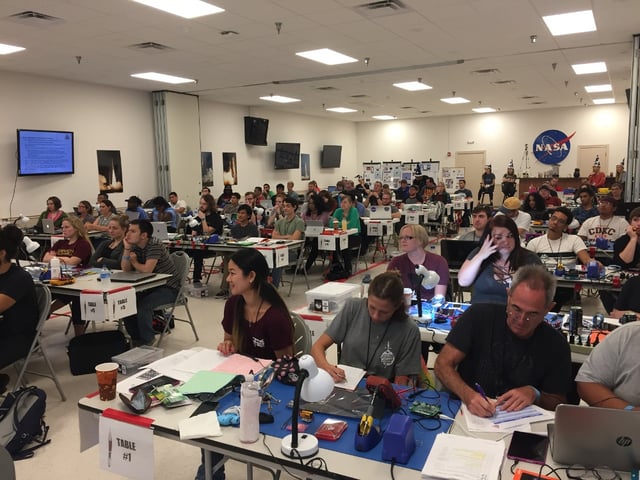
The program is run every summer and has three levels. First-timers start with the RockOn workshop, held at NASA’s Wallops Flight Facility in Virginia. The weeklong workshop gives students a crash course in space experimentation, including basics like soldering and programming, learning about the space environment, and training in how to design hardware that can survive the 40g launch loads and high spin rates the experiments will be subjected to during the flight. Also covered are no-less-important topics like how to work in a team, troubleshooting skills and how to effectively present one's work.
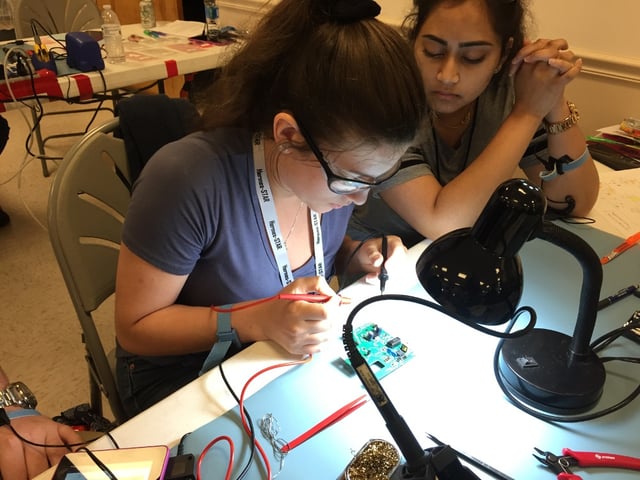
During all of this, the student teams build their own experiment module from a provided kit; perform part, subsystem and system-level tests; participate in design reviews (a great skill for future employment); integrate their payload into the payload section; and participate in flight-qualification tests at the NASA facility.
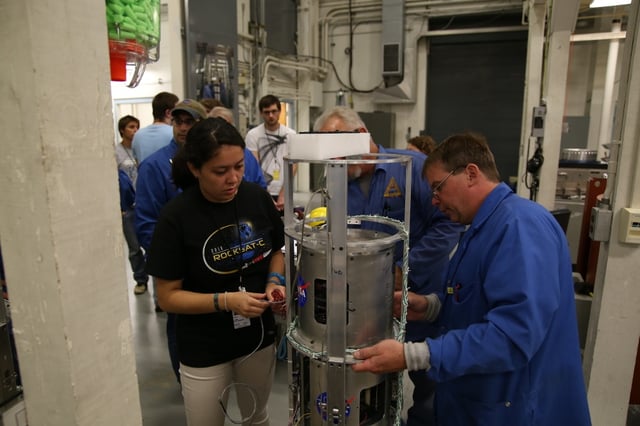
At the end of the week, the payload section of the rocket is trucked out to the coastal launch site, carefully attached to the solid rocket motors that will propel it into space, and mounted to the launch rail. After numerous range safety and weather checks and a four-hour countdown, the rocket is launched! The first stage burns for two seconds and separates, by which time the 40-foot rocket is already several kilometers up and approaching the speed of sound. After coasting for a few seconds, the second stage ignites and burns for another minute, propelling the rocket on a parabolic course that will take it well out of the atmosphere. To stabilize the rocket, the fins are canted to give it a high rate of spin. Once it leaves the atmosphere and the rocket motor burns out, the spin is removed by deploying “despin” weights or, in more advanced rockets, by cold-gas thrusters that completely stabilize the rocket for Earth or space viewing.
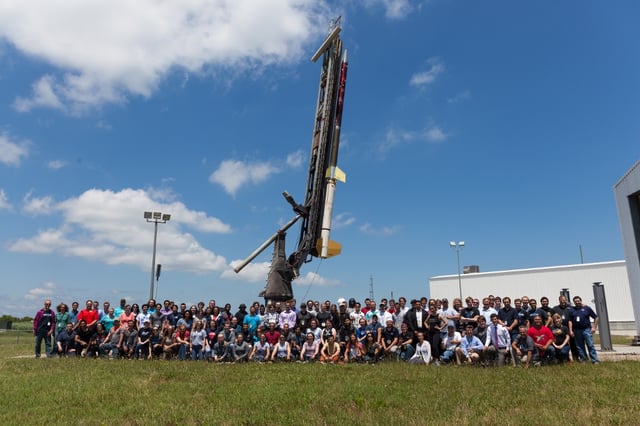
For the next five minutes the rocket silently coasts to 100km and back, during which time the payloads perform their experiments. The rocket then re-enters the atmosphere, getting hot but not hot enough to burn up. When it descends to 20,000 feet, it deploys a parachute, floats down for another 20 minutes and splashes into the Atlantic 100 miles offshore. The rocket is sealed and floats, and is recovered by ship the same day. The students then get to de-integrate their payloads and retrieve the SD cards with the flight data from their experiments.
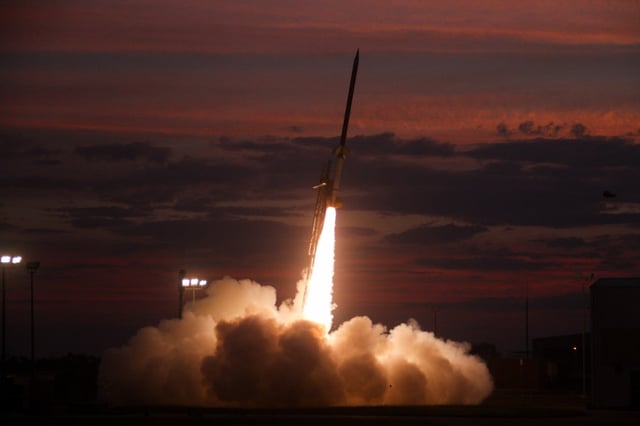
The next level up is RockSat-C, which uses the same rocket and payload hardware as the RockOn workshop but allows students to design their own experiments. This is a longer process that starts the fall before next summer’s launch. During the school year, students hold frequent teleconferences with NASA personnel and participate in an industry-standard series of design reviews before, during and after their hardware design and build. Along with the freedom to design their own experiments, the students must learn and follow the extensive safety rules enforced by the rocket program, and must be able to prove to the NASA reviewers that their payloads are safe. As with the RockOn workshop, the student teams travel to NASA's Wallops Flight Facility in the summer to test and integrate their payloads into the larger rocket, fly their experiments and retrieve and report on their findings.
The top level of the program is RockSat-X, which also allows students to propose, design and build their own experiments, but for these flights the rocket hardware sheds its skin once it leaves the atmosphere, exposing the student experiments directly to space. This allows a whole new level of possibilities, and students have flown atmospheric samplers and deployable structures and have even ejected small re-entry vehicles. Because the environment is severe and the stakes are high, the requirements and regulations are necessarily more stringent than the earlier programs. But one of the benefits of flying on sounding rockets is the ability to test out innovative hardware and techniques relatively inexpensively and safely. If you have an interesting proposal, the NASA Wallops personnel will likely be game to try it.
For more information on how you can get involved with the RockOn program, contact the Colorado Space Grant Consortium. And stay tuned; the new breed of suborbital spacecraft from Blue Origin and Virgin Galactic will have opportunities for NASA-funded student experiments as well. And since those spacecraft can take passengers, someday you may be able to build an experiment and ride along with it...
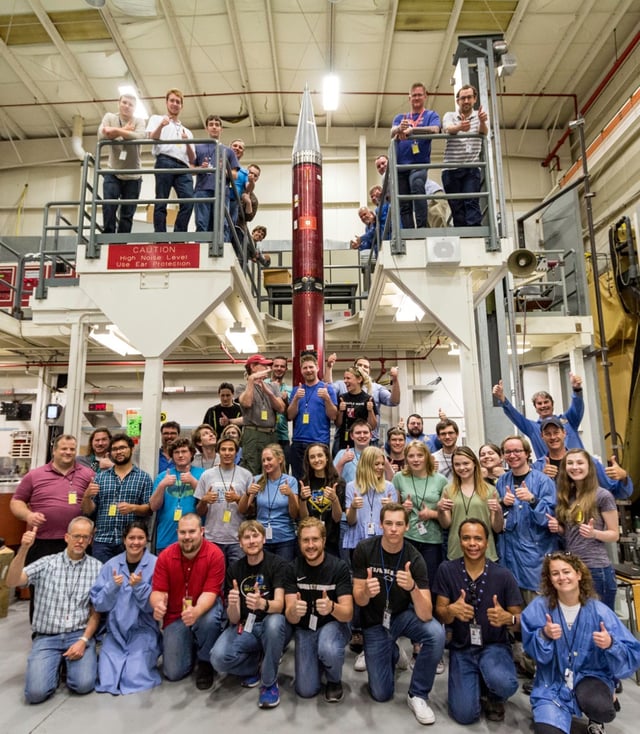
For more information:
The Colorado Space Grant ConsortiumMaterials and results from the 2017 RockOn Program
-
NASA Sounding Rocket Handbook (a good overview of the technical and programmatic requirements when working on a government rocket flight)


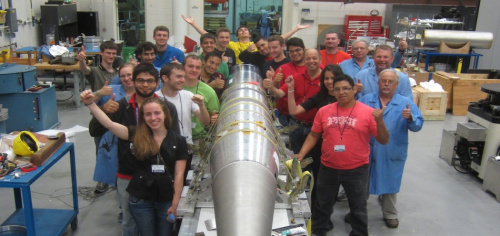
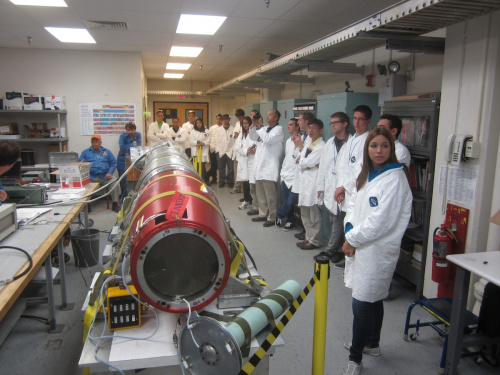
Maker Education, student projects, helpful information, STEM